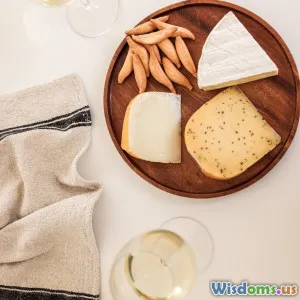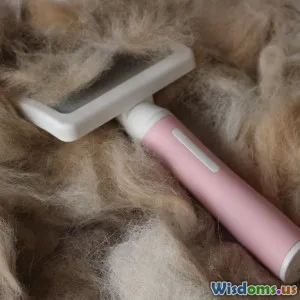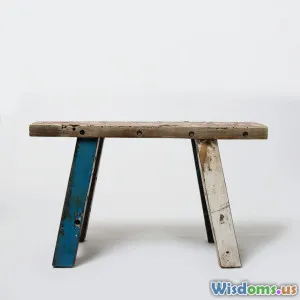
The Ultimate Guide to Wine Selection
7 min read Master the art of wine selection with this ultimate guide—unlock expert tips, flavor pairing, and savvy buying advice for every occasion. (0 Reviews)
The Ultimate Guide to Wine Selection
Introduction
Wine is more than just a drink; it's an experience that can elevate meals, spark celebrations, and even tell stories of regions and cultures. Yet for many, selecting the right bottle can be intimidating—packed labels, unfamiliar grape varieties, and complex tasting notes often leave novices scratching their heads. What if you could strip back this complexity and approach wine confidently, whether buying for yourself or selecting the perfect bottle for a dinner party?
This guide serves as your go-to companion to mastering the art of wine selection. Equipped with knowledge on common varieties, terroir, food pairings, and buying strategies, you’ll discover how to confidently choose wines that delight your palate and suit every occasion.
Understanding Wine Basics
The Grape Varieties
Wine flavor and style begin with the grape. Knowing the most popular varietals helps demystify wine labels:
- Cabernet Sauvignon: Known for bold tannins and flavors of dark fruits like blackberry and cassis. A staple in full-bodied red wines.
- Pinot Noir: Celebrated for its lighter body and complex aromas of cherry and forest floor.
- Chardonnay: A versatile white grape that can range from crisp green apple flavors to buttery, oak-aged richness.
- Sauvignon Blanc: Crisp, herbaceous, and citrusy, often with notes of grass or bell pepper.
Recognizing these and other grapes enables an initial prediction of flavor profiles before tasting.
Terroir and Its Impact
Terroir refers to the environmental conditions where grapes grow, including soil, climate, and topography. These factors greatly influence wine character:
- Cool climates like Burgundy yield wines with higher acidity and lighter body.
- Warm regions such as California typically produce more fruit-forward, fuller-bodied wines.
David Schildknecht, wine critic, highlights terroir by saying, "The place a vine grows remains reflected in its fruit, imparting a subtle imprint of geography onto the taste."
By understanding terroir, you can explore wines from different regions and diversify your palate.
Matching Wine with Food
One of the most enjoyable aspects of wine is how it can enhance a meal. Here are essential pairing principles:
Complement or Contrast
Wines can either complement or contrast the flavors of food. For example:
- Complement: A buttery Chardonnay pairs beautifully with rich seafood dishes like lobster trembles in harmony.
- Contrast: A high-acid Sauvignon Blanc cuts through creamy goat cheese, refreshing the palate.
Classic Pairings
- Red Meat & Cabernet Sauvignon: The tannins in cabernet bind with fats in red meat, balancing flavors.
- Spicy Food & Riesling: Slight sweetness in Riesling tames spicy dishes from cuisines like Thai or Indian.
- Cheese & Red Wine: Aged cheeses develop umami that pairs well with medium-bodied reds like Merlot.
By applying these guiding principles, diners can craft memorable meal and wine experiences.
Selecting Wine Like an Expert
Reading Labels with Confidence
While labels can seem cryptic, key information helps:
- Vintage Year: Indicates grape harvest year; helps identify wine’s age and likely flavor.
- Appellation: Tells the region; a Bordeaux or Chianti label signals specific regional styles.
- Alcohol Content: Heavier, sweeter wines often have higher ABV.
Learning these cues offers insight without needing to be an expert sommelier.
Tasting Tips
Engaging your senses is critical:
- Look: Check clarity and color intensity.
- Swirl & Smell: Aerate the wine to uncover aromas.
- Sip & Savor: Identify sweetness, acidity, tannins, and body.
The more you taste, the more intuitive selection becomes.
Buying Wine: Smart Strategies
- Start Small: Buy bottles from different varietals and regions on sale or tasting samples.
- Trust Store Staff: Staff educated in wine can recommend based on your preferences.
- Price vs. Quality: Higher price doesn’t always mean better; many great wines exist in a moderate price range ($15-$30).
For example, vineyards from less famous but emerging areas like Spain’s Priorat offer excellent value and quality.
Preservation and Storage
Even the best-selected wine can deteriorate if stored improperly:
- Temperature: Keep at 50-59°F (10-15°C) to maintain quality.
- Humidity: Around 70% to preserve corks and limit oxygen exposure.
- Bottle Position: Store horizontally to keep cork moist.
Proper storage ensures your chosen wine delivers its intended flavors when enjoyed.
Conclusion
Wine selection need never be a confusing mystery. By understanding grape varieties, the influence of terroir, and how to pair wine with food, you empower yourself to choose bottles that excite your taste buds and enhance your dining experiences. Combine this knowledge with confident labeling interpretation and savvy purchasing, and you’ll elevate your appreciation from casual sipping to informed enjoyment.
As Julia Child famously remarked, "You don’t have to cook fancy or complicated masterpieces—just good food from fresh ingredients." The same can be said about wine: seek quality, explore with an open palate, and enjoy the vibrant world that wine offers. Now it’s your turn—pop the cork and savor your journey into masterful wine selection!
Rate the Post
User Reviews
Popular Posts





















